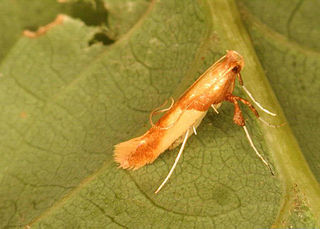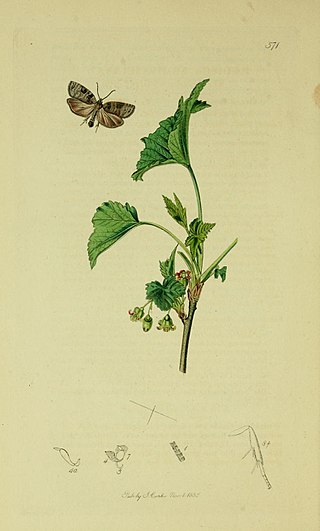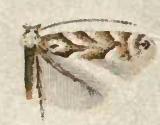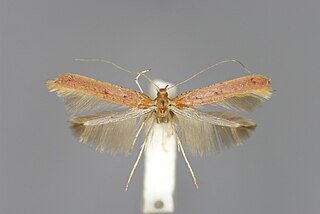
Caloptilia rufipennella is a moth of the family Gracillariidae that is found throughout Europe.

Anacampsis populella is a moth of the family Gelechiidae, which is native to Europe and has been accidentally introduced to North America. It was first described in 1759 by Carl Alexander Clerck, a Swedish entomologist. The type specimen is from Sweden. The foodplants of the larvae are poplars and willows.

Batrachedra praeangusta is a moth of the family Batrachedridae which is native to Europe. It is also found in North America. It was first described by Adrian Haworth in 1828 from the type specimen found in England. The foodplants of the larvae are poplars and willows.

Caloptilia alchimiella is a moth of the family Gracillariidae. It is found in Europe and the Near East.

Caloptilia cuculipennella is a moth of the family Gracillariidae. It is found in Holarctic Region, including most of Europe.

Parornix anglicella is a moth of the family Gracillariidae found in Asia and Europe. It was described in 1850, by the English entomologist Henry Tibbats Stainton, from a specimen from Lewisham, Kent.

Caloptilia populetorum is a moth of the family Gracillariidae. It is found in most of Europe, except Italy, the Balkan Peninsula and the Mediterranean islands.

Epinotia nisella is a moth of the family Tortricidae which is found in the Palearctic, Europe and North America. It was first described by Carl Alexander Clerck in 1759.

Stigmella salicis is a moth of the family Nepticulidae which is found in Europe. It was first described by the English entomologist, Henry Stainton in 1854. The type locality is from England.

Apotomis semifasciana, the short-barred grey marble, is a moth of the family Tortricidae. It was first described by the English entomologist Adrian Hardy Haworth in 1811.

Phyllonorycter salictella is a moth of the family Gracillariidae. It is known from all of Europe, east to Russia and Japan.

Phyllonorycter salicifoliella is a moth of the family Gracillariidae. It is widespread across North America, from Mississippi to Ontario in the east and from southern California to northern British Columbia in the west.
Phyllonorycter mildredae is a moth of the family Gracillariidae. It is probably widespread through the eastern United States but currently reported from only Washington D.C., Kentucky and Ohio.

Caloptilia betulicola, the red birch slender, is a moth of the family Gracillariidae. It is found from Scandinavia and the north of European Russia to the Pyrenees and Alps and from Ireland to Poland and Slovakia. In the east it is found up to China, Japan and the Russian Far East.

Caloptilia elongella is a moth of the family Gracillariidae. It is known from all of Europe east to eastern Russia. It is also found in North America from British Columbia, south to California and east in the north to New Hampshire and New York.

Caloptilia falconipennella is a moth of the family Gracillariidae. It is known throughout all of Europe, except the Balkan Peninsula.

Caloptilia robustella is a moth of the family Gracillariidae. It is known from all of Europe, except the Balkan Peninsula.
Caloptilia chrysolampra is a moth of the family Gracillariidae. It is known from China, Japan, Korea and Taiwan.

Micrurapteryx salicifoliella is a moth of the family Gracillariidae. It is known from Canada and the United States.

Teleiodes luculella, the crescent groundling, is a moth of the family Gelechiidae. It is found from Europe to the southern Ural and Transcaucasia. The habitat consists of woodlands, including oak woodlands.



















